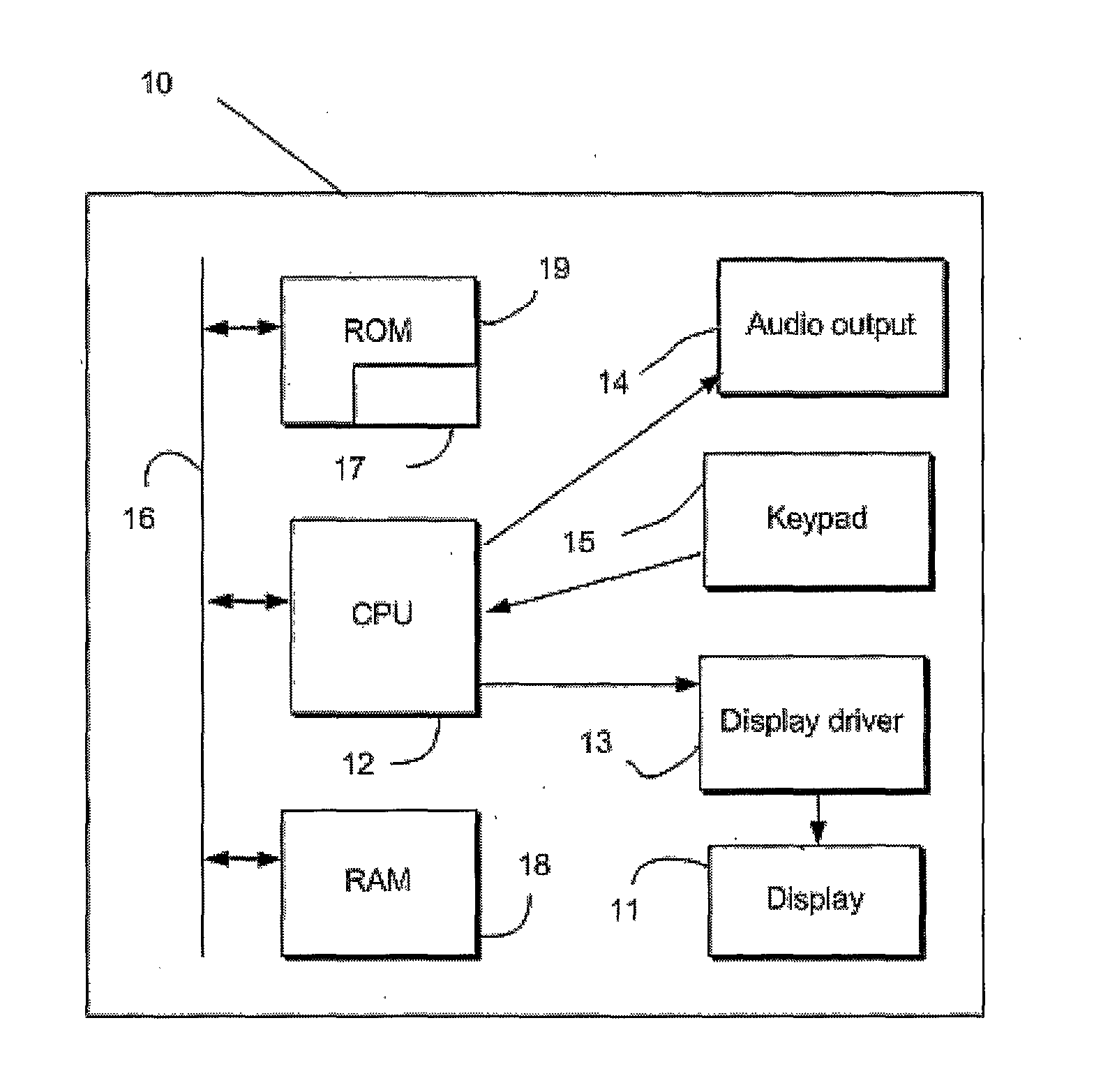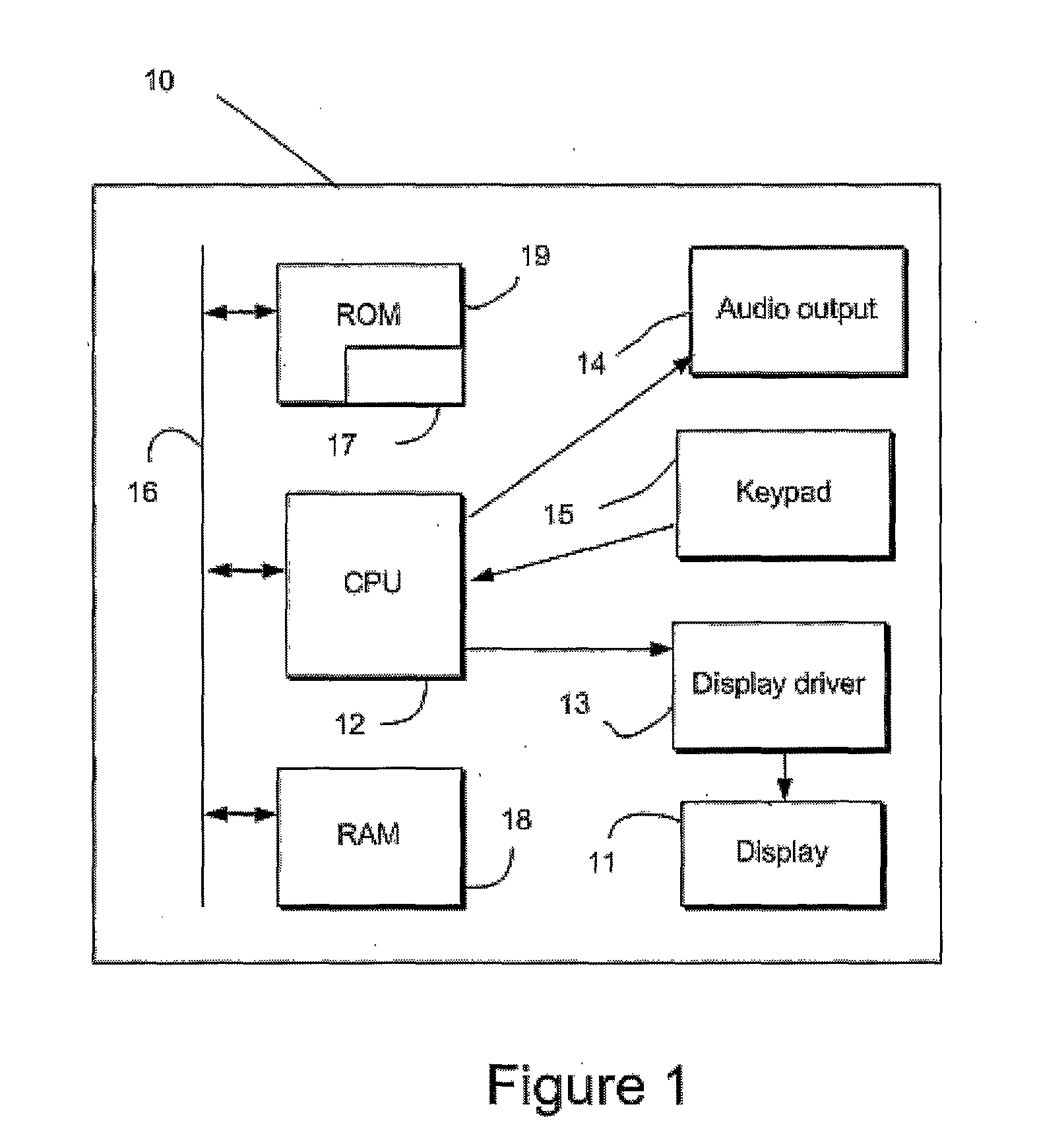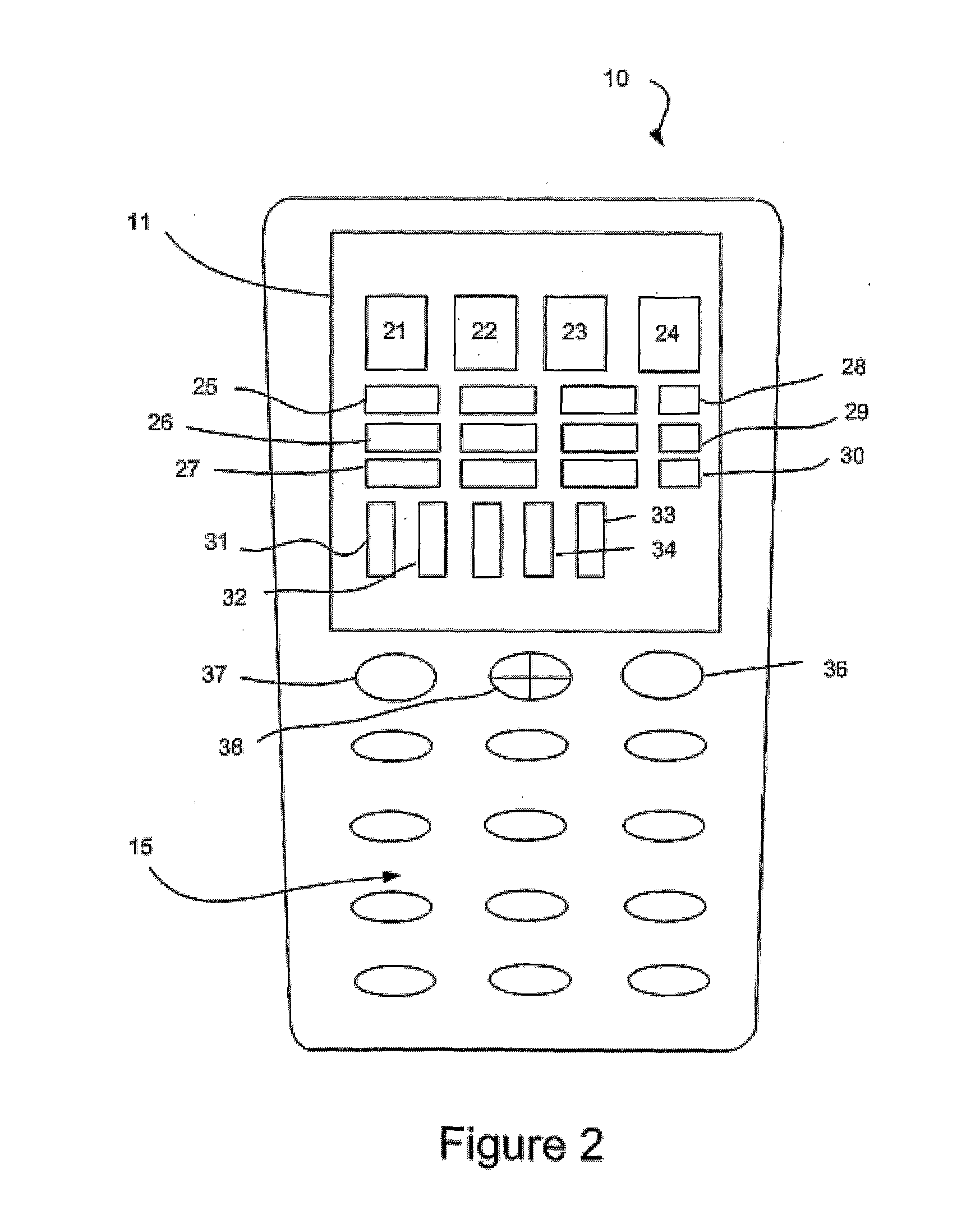Providing an image for display
a technology of providing an image and a display screen, applied in the field of providing an image for display, can solve the problems of difficult for users to obtain information from electronic displays, inferior contrast of electronic displays, etc., and achieve the effects of increasing the usefulness of users, good recognisability of subjects, and high degree of vertical symmetry
- Summary
- Abstract
- Description
- Claims
- Application Information
AI Technical Summary
Benefits of technology
Problems solved by technology
Method used
Image
Examples
Embodiment Construction
[0024]A computing device 10 is shown schematically in FIG. 1. In this example, the computing device is a mobile, portable communications device 10, for instance a mobile telephone, smartphone or personal digital assistant. The computing device 10 may instead be a notebook or laptop computer, gaming console or any other such device. The computing device 10 has a display 11 having a particular size and resolution. For instance, the display 11 may have a diagonal dimension of 6 cm and a resolution of 240 by 320 pixels. The resolution defines the number of pixels that the display includes. In the case of a 240 by 320 pixel display, there are 76,800 pixels.
[0025]The mobile device 10 includes a CPU 12, which provides video signals to the display 11, via a display driver 13, and to an audio output device 14 (e.g. headphone socket or speaker. The CPU 12 is connected to receive user inputs via a keypad 15. The CPU 12 is connected via a bus 16 to ROM 19 and to RAM 18. Stored in the ROM 19 are...
PUM
 Login to View More
Login to View More Abstract
Description
Claims
Application Information
 Login to View More
Login to View More - R&D
- Intellectual Property
- Life Sciences
- Materials
- Tech Scout
- Unparalleled Data Quality
- Higher Quality Content
- 60% Fewer Hallucinations
Browse by: Latest US Patents, China's latest patents, Technical Efficacy Thesaurus, Application Domain, Technology Topic, Popular Technical Reports.
© 2025 PatSnap. All rights reserved.Legal|Privacy policy|Modern Slavery Act Transparency Statement|Sitemap|About US| Contact US: help@patsnap.com



